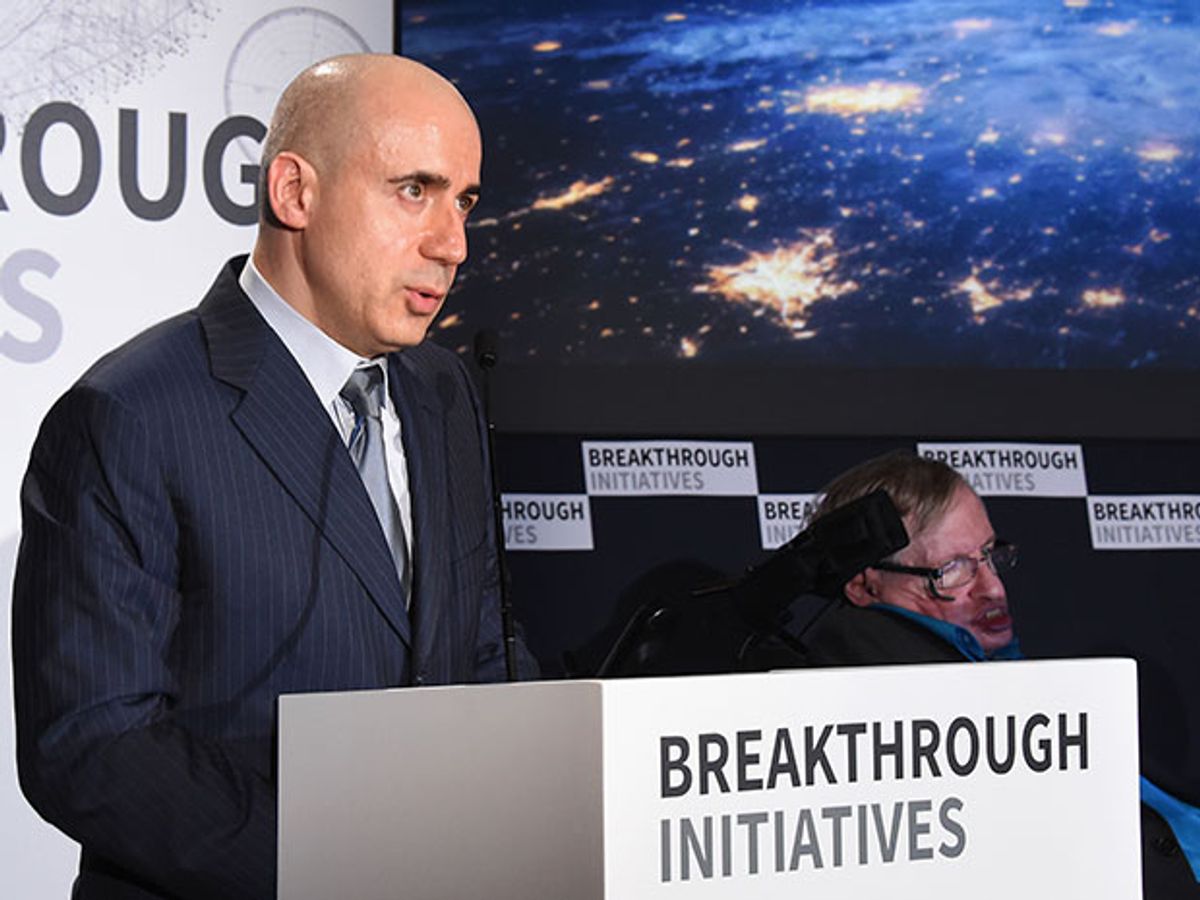The question of whether humans live alone in the universe has driven many scientists’ careers and fueled many a Hollywood fantasy of alien encounters. A new project described as the “biggest scientific search ever undertaken for signs of intelligent life beyond Earth” could provide some answers with an unprecedented $100 million commitment over the next 10 years.
Russian billionaire Yuri Milner aims to give the search for extraterrestrial life a huge boost with his $100 million, which will be channeled through the newly-announced Breakthrough Initiatives program. The 20 July announcement described a global effort that would cover 10 times more sky than any previous program and scan at least 5 times more of the radio spectrum with 100 times the speed of previous efforts. Such a broad scope would survey of the million stars closest to Earth, spanning a region that includes the center of our Milky Way galaxy.
“It’s time to commit to finding the answer to the search for life beyond Earth,” said Stephen Hawking, theoretical physicist at the University of Cambridge in the UK, during a press event. “The Breakthrough Initiatives are making that commitment. We are alive. We are intelligent. We must know.”
The first initiative, called Breakthrough Listen, will use two of the world’s most powerful telescopes—the 100 Meter Robert C. Byrd Green Bank Telescope in West Virginia and the 64-meter diameter Parkes Telescope in New South Wales, Australia—to scan the radio spectrum for possible signals from alien civilizations. Such telescopes could detect a signal with the power of aircraft radar sent from one of the 1,000 nearest stars. They could also pick up signals sent from the center of the Milky Way, if those signals were at least 12 times as powerful as a typical radar astronomy site.
To complement the radio search, the Automated Planet Finder Telescope at Lick Observatory in California will also search for optical laser transmissions. The “Lick Telescope” could potentially detect a 100-watt laser beamed from a nearby star system. (“Nearby” is a relative term here when describing a distance of 40 trillion kilometers.)
The unprecedented program is sure to generate huge amounts of data. The Breakthrough Initiatives leaders, including prominent astronomers and scientists involved with the SETI project, promised that all the data would be open to the public. They also committed to developing open-source software that could screen the expected flood of information. The software used in the Breakthrough Listen project would, in theory, be compatible with other telescopes that wanted to join the search.
Breakthrough Listen also aims to join forces with SETI@home, the crowdsourcing program hosted by the University of California, Berkley that allows 9 million people around the world to donate their spare computing power in the hunt for extraterrestrial signals.
“With Breakthrough Listen, we’re committed to bringing the Silicon Valley approach to the search for intelligent life in the Universe,” Milner said. “Our approach to data will be open and taking advantage of the problem-solving power of social networks.”
A second initiative, called Breakthrough Message, offers a prize pool totaling $1 million for digital messages designed to represent humanity and planet Earth. According to Milner’s organization, the initiative will provide a way “to learn about the potential languages of interstellar communication and to spur global discussion on the ethical and philosophical issues surrounding communication with intelligent life beyond Earth.”
Jeremy Hsu has been working as a science and technology journalist in New York City since 2008. He has written on subjects as diverse as supercomputing and wearable electronics for IEEE Spectrum. When he’s not trying to wrap his head around the latest quantum computing news for Spectrum, he also contributes to a variety of publications such as Scientific American, Discover, Popular Science, and others. He is a graduate of New York University’s Science, Health & Environmental Reporting Program.



